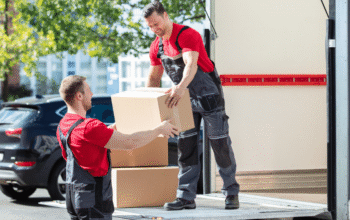When fire strikes, knowing the correct fire extinguisher to use is crucial. Different extinguishers are appropriate for different fire classes, so it’s important to keep the right one close by. Using the wrong extinguishing agent could reignite the fire, if you don’t use the right one. Here are some things to consider when choosing the right Test and Tag fire extinguisher service.
Class A
Fire extinguishers come in a variety of sizes, and many have gauges that allow you to monitor the pressure inside. When you need to use your fire extinguisher, aim for the base of the fire and squeeze the handle to release the extinguishing agent. Then sweep the nozzle side to side. Repeat the process as needed. Remember to follow all safety precautions for fire extinguishers, including checking that the fire extinguisher is fully charged and ready to be used.
Fire extinguishers are a great way to protect your home or office. Most of these devices are stored in offices, retail premises, schools, and warehouses. They are used to put out fires, and are usually effective in putting out most types of fire. However, fires involving metals, liquids, or electrical appliances should not be extinguished with water.
Condensed aerosols
Condensed aerosols are a relatively new technology used in fire extinguishers. They contain a mixture of oxidant, reducing agent and other partial additives. The result is a smoke-like substance that stays suspended in the air for a long time. These smoke-like particles are effective for extinguishing fires and can be delivered to the fire by either mechanical, electrical or combined electro-mechanical means.
The components of condensed aerosols are small, thermoplastic particles that are carried by inert gas. These particles can easily flow around obstacles and penetrate volumes, spreading uniformly within the protected space. These particles interact with the oxidizing agent to prevent a chain reaction, thus preventing the fire from propagating. Unlike traditional fire-fighting agents that cause the environment’s detriment, these fire-fighting particles are completely environmentally friendly.
Water
Fire extinguishers can be of two types, foam and water. Foam extinguishers can be used to put out small fires, while water extinguishers can be used to do the same job. Water mist extinguishers, on the other hand, use distilled water to create a fine spray. These are most often used in places where the water source is not regulated and may endanger personnel and equipment. Water mist extinguishers are useful in places such as operating rooms, museums, and book collections.
Water fire extinguishers can be used to put out fires caused by carbon-based materials. While water is a good solution for fires involving carbon-based materials, it won’t put out Class C fires. Pure water will freeze, so you should check the temperature of the area to be extinguished before trying to use water to do so. For class A fires, you should consider buying APW extinguishers. They stand about two feet tall and weigh 25 pounds.
Foam
Foam fire extinguishers should be used with care and caution. You should not aim the foaming agent at the fire itself. If you do, the agent will be driven beneath the surface and ineffective. It may also splash out onto surrounding objects, spreading the fire. So, how do you use foam fire extinguishers? Here are some tips. First, know where to place the extinguisher.
The next step is to locate the foam fire extinguisher. You can tell if it is safe to use by its blue band. Its main function is to put a blanket of foam over the burning flammable liquid. It also helps prevent the release of flammable vapours. Foam fire extinguishers are available in a 9.0 litre size. Moreover, they can be used on many different types of flammable liquids.







